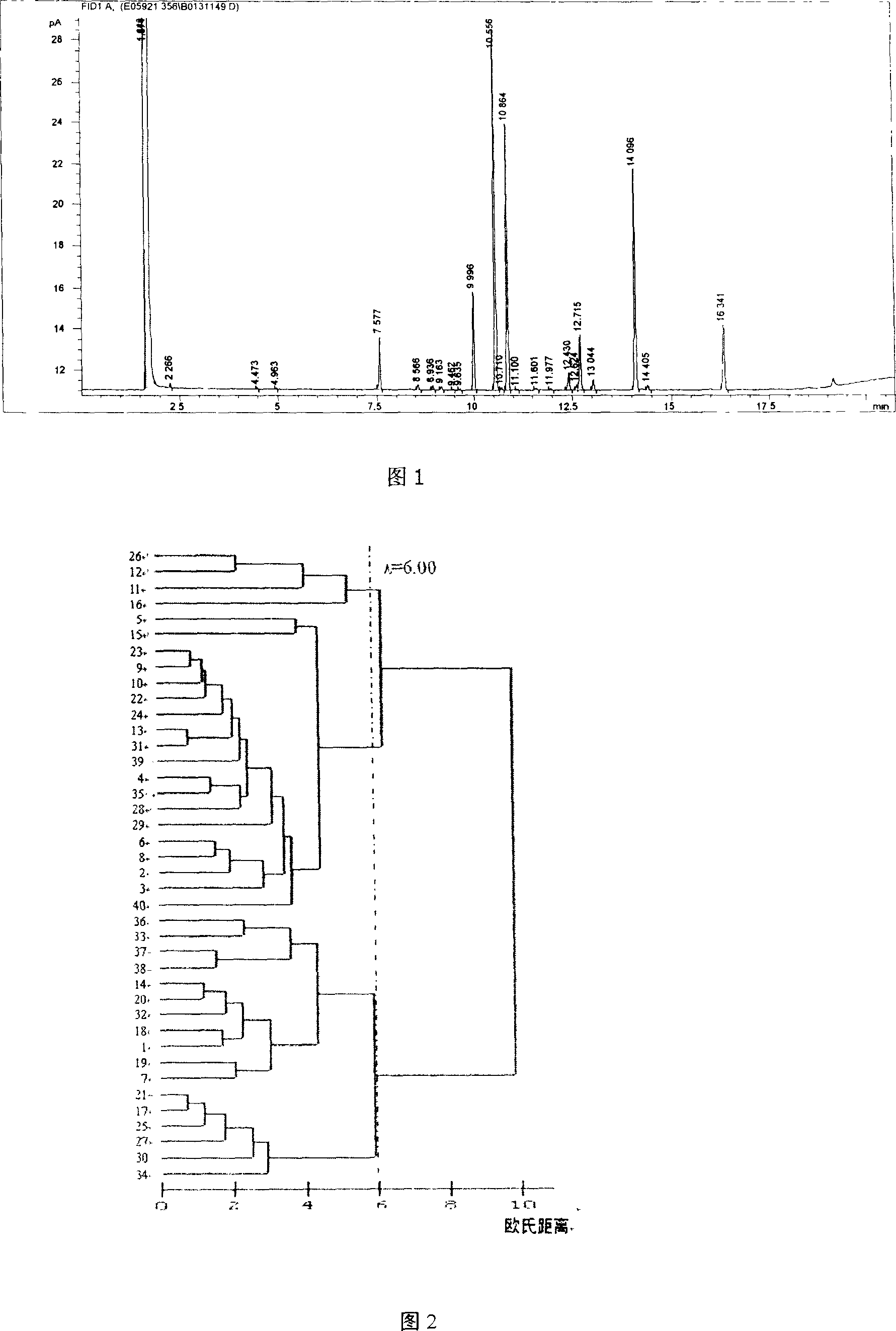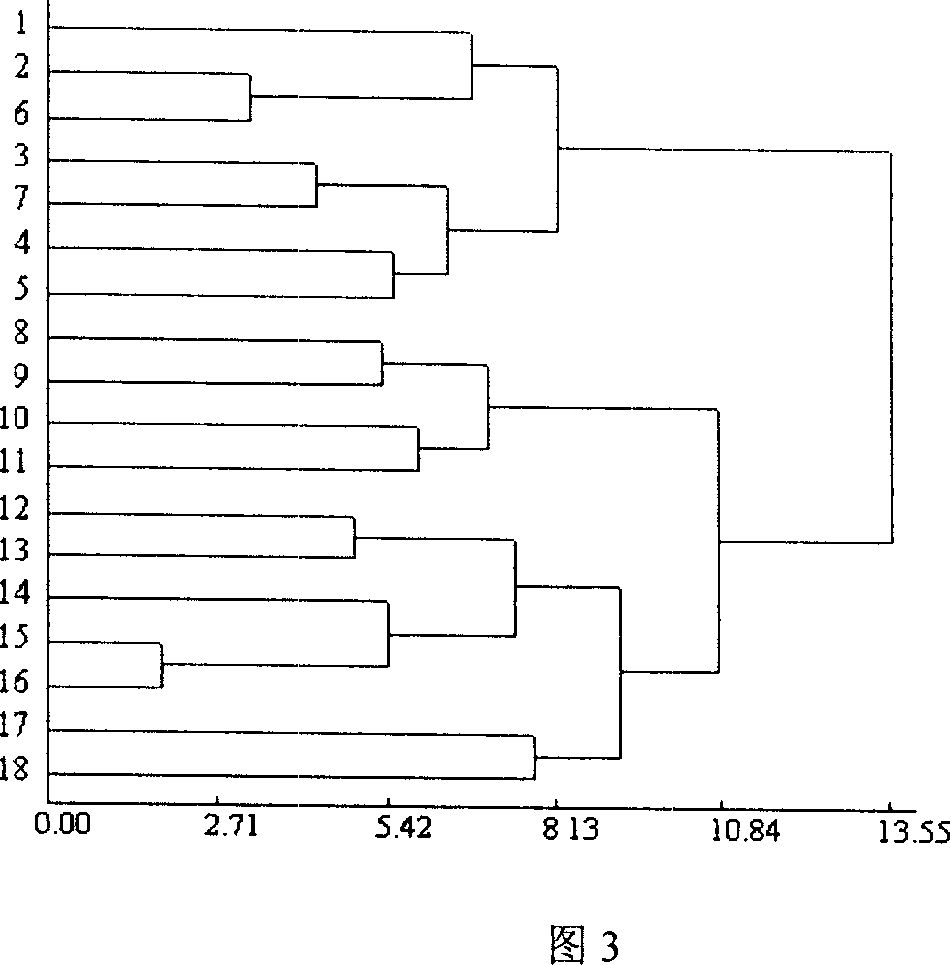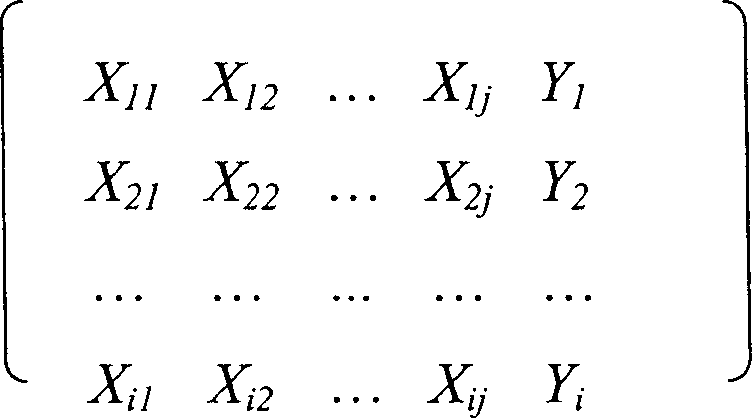Process of analyzing descending differentiated fatty acid type of Ralstonia solanacearum
A technology of Ralstia solanacearum and analysis method, which is applied in the field of analysis of fatty acid types differentiated under Ralstia solanacearum species, and can solve problems such as inability to distinguish Ralstia solanacearum strains
- Summary
- Abstract
- Description
- Claims
- Application Information
AI Technical Summary
Problems solved by technology
Method used
Image
Examples
Embodiment Construction
[0029] 1. Screening of Fatty Acid Stratification Factors of R. solanacearum
[0030] 1. Extraction and gas chromatography analysis of fatty acids of R. solanacearum
[0031] Reagents used for fatty acid extraction: including fatty acid methyl ester mixture standard sample, colony collection medium (TSB medium), composed of tryptone soybean broth, agar and water, saponification reagent is a mixed solution of sodium hydroxide and methanol, methylation The reagent is a mixture of hydrochloric acid and methanol, the extraction reagent is a mixture of n-hexane and methyl tert-butyl ether, and the washing reagent is sodium hydrogenotrophic solution.
[0032] First collect bacterium colony, release fatty acid after saponifying bacterial cell with saponification reagent, methylate fatty acid with methylation reagent again, then finish the extraction of 40 strains of Ralstia solanacearum fatty acid through basic washing after extraction with fatty acid methyl ester, in the following P...
PUM
 Login to View More
Login to View More Abstract
Description
Claims
Application Information
 Login to View More
Login to View More - R&D
- Intellectual Property
- Life Sciences
- Materials
- Tech Scout
- Unparalleled Data Quality
- Higher Quality Content
- 60% Fewer Hallucinations
Browse by: Latest US Patents, China's latest patents, Technical Efficacy Thesaurus, Application Domain, Technology Topic, Popular Technical Reports.
© 2025 PatSnap. All rights reserved.Legal|Privacy policy|Modern Slavery Act Transparency Statement|Sitemap|About US| Contact US: help@patsnap.com



